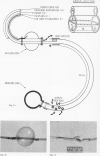Abstract
The reliability and accuracy of the two-lumen tube perfusion method for measuring intestinal absorption in man has been assessed by the use of a proximal occlusive balloon in nine normal volunteers.
Luminal occlusion significantly reduced the variability of individual glucose and water absorption rates, and reduced the variability of triplicate marker concentrations within individual studies. Mean absorption rates of glucose, water, sodium, and chloride were not significantly affected by luminal occlusion. Absorption rates obtained with the triple-lumen tube method were rather more variable both within and between individuals, but a statistical comparison of the accuracy of the two methods could not be made.
These results are discussed in relation to the contribution of endogenous gut secretion and proximal reflux of infused fluid to the variability of absorption rates obtained by the perfusion technique.
Full text
PDF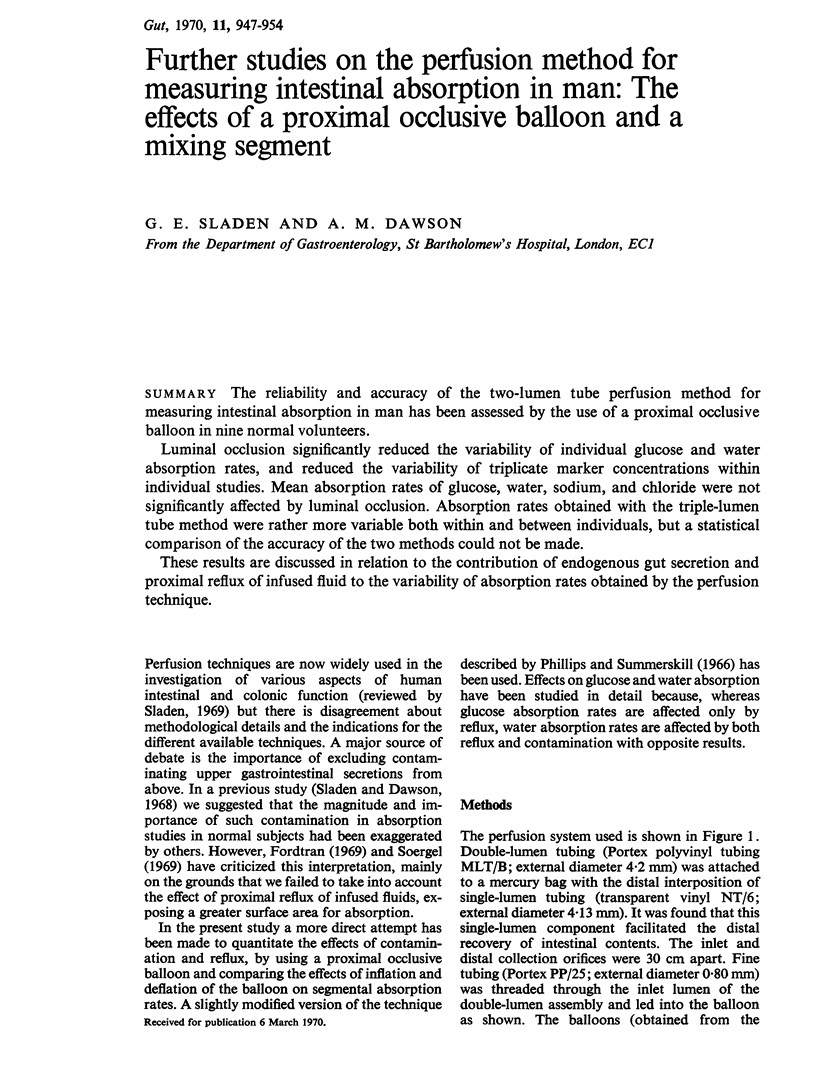
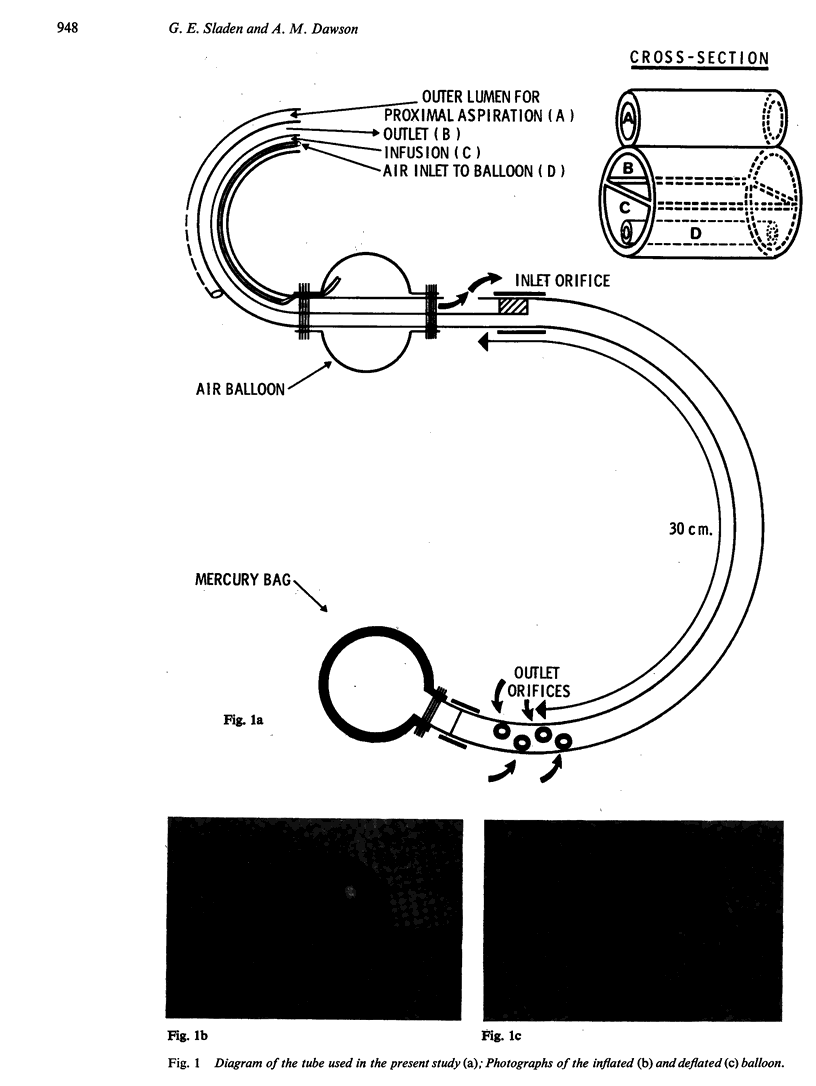
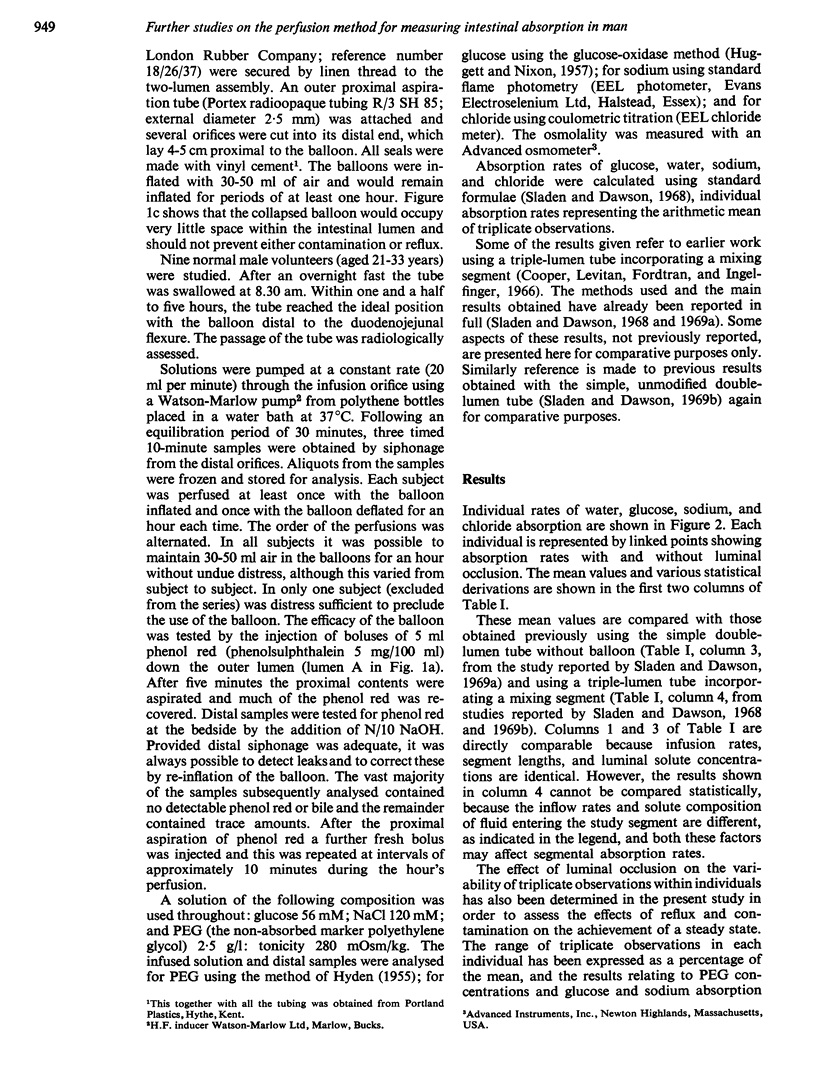
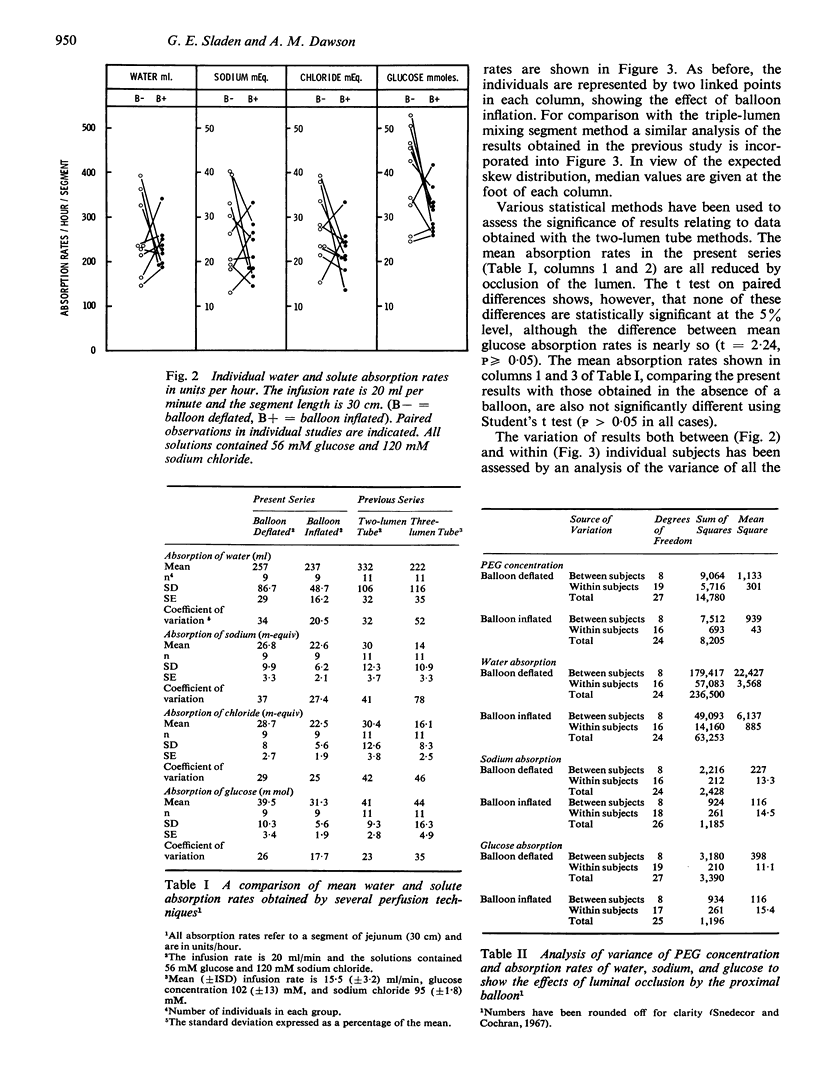
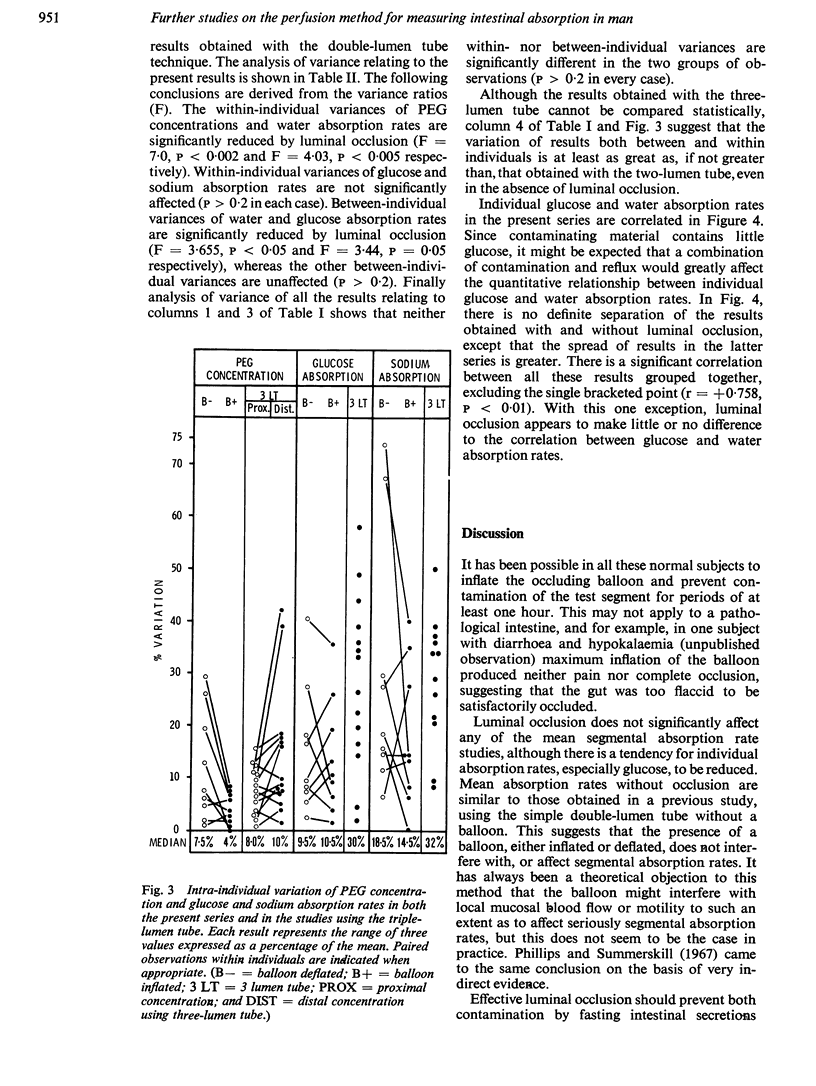
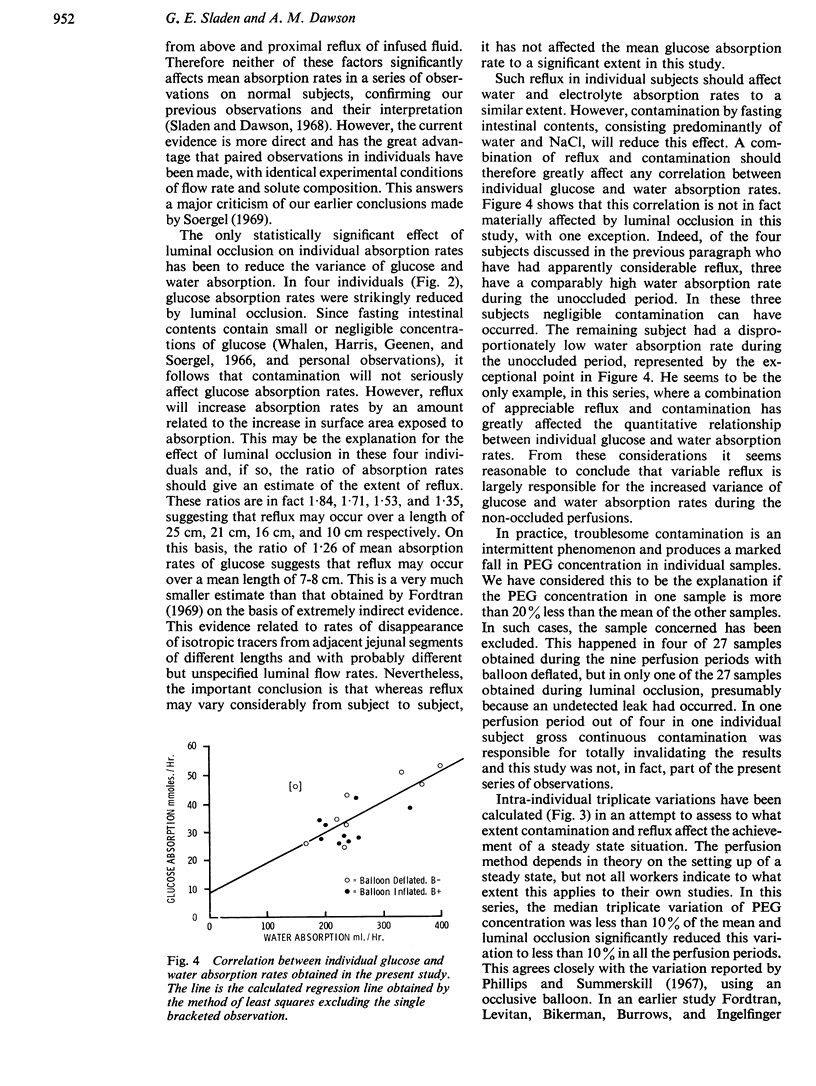
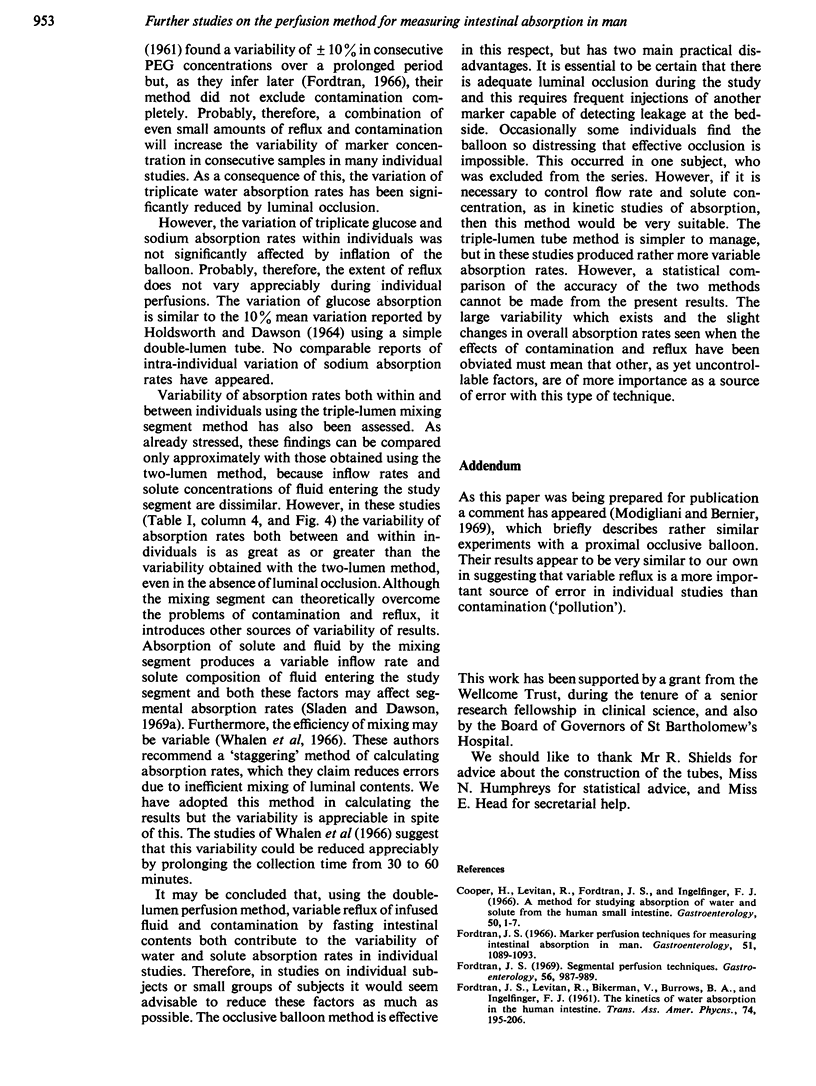
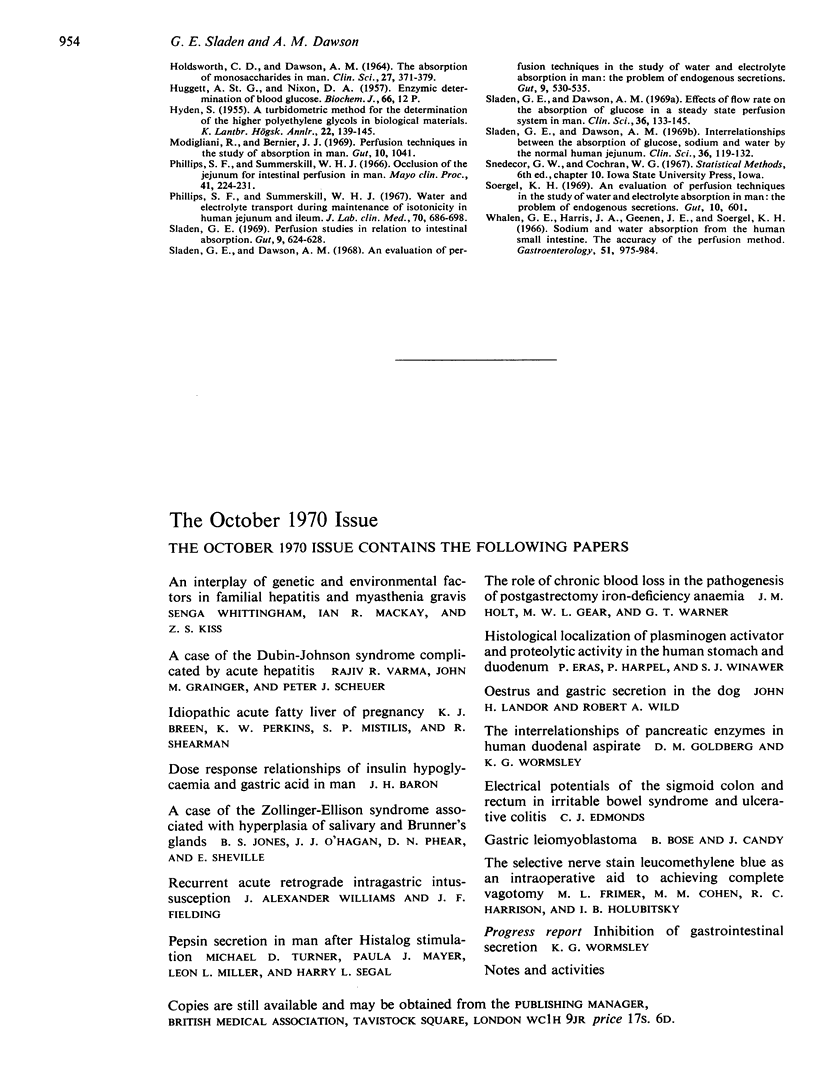
Images in this article
Selected References
These references are in PubMed. This may not be the complete list of references from this article.
- Cooper H., Levitan R., Fordtran J. S., Ingelfinger F. J. A method for studying absorption of water and solute from the human small intestine. Gastroenterology. 1966 Jan;50(1):1–7. [PubMed] [Google Scholar]
- FORDTRAN J. S., LEVITAN R., BIKERMAN V., BURROWS B. A., INGELFINGER F. J. The kinetics of water absorption in the human intestine. Trans Assoc Am Physicians. 1961;74:195–206. [PubMed] [Google Scholar]
- Fordtran J. S. Marker perfusion techniques for measuring intestinal absorption in man. Gastroenterology. 1966 Dec;51(6):1089–1093. [PubMed] [Google Scholar]
- Fordtran J. S. Segmental perfusion techniques. Gastroenterology. 1969 May;56(5):987–989. [PubMed] [Google Scholar]
- HOLDSWORTH C. D., DAWSON A. M. THE ABSORPTION OF MONOSACCHARIDES IN MAN. Clin Sci. 1964 Dec;27:371–379. [PubMed] [Google Scholar]
- Modligiani R., Bernier J. J. Perfusion techniques in the study of absorption in man. Gut. 1969 Dec;10(12):1041–1041. doi: 10.1136/gut.10.12.1041. [DOI] [PMC free article] [PubMed] [Google Scholar]
- Phillips S. F., Summerskill W. H. Occlusion of the jejunum for intestinal perfusion in man. Mayo Clin Proc. 1966 Apr;41(4):224–231. [PubMed] [Google Scholar]
- Phillips S. F., Summerskill W. H. Water and electrolyte transport during maintenance of isotonicity in human jejunum and ileum. J Lab Clin Med. 1967 Oct;70(4):686–698. [PubMed] [Google Scholar]
- Sladen G. E., Dawson A. M. An evaluation of perfusion techniques in the study of water and electrolyte absorption in man: the problem of endogenous secretions. Gut. 1968 Oct;9(5):530–535. doi: 10.1136/gut.9.5.530. [DOI] [PMC free article] [PubMed] [Google Scholar]
- Sladen G. E., Dawson A. M. Effects of flow rate on the absorption of glucose in a steady state perfusion system in man. Clin Sci. 1969 Feb;36(1):133–145. [PubMed] [Google Scholar]
- Sladen G. E., Dawson A. M. Interrelationships between the absorptions of glucose, sodium and water by the normal human jejunum. Clin Sci. 1969 Feb;36(1):119–132. [PubMed] [Google Scholar]
- Sladen G. E. Perfusion studies in relation to intestinal absorption. Gut. 1968 Dec;9(6):624–628. [PMC free article] [PubMed] [Google Scholar]
- Soergel K. H. An evaluation of perfusion techniques in the study of water and electrolyte absorption in man: the problem of endogenous secretions. Gut. 1969 Jul;10(7):601–601. doi: 10.1136/gut.10.7.601. [DOI] [PMC free article] [PubMed] [Google Scholar]
- Whalen G. E., Harris J. A., Geenen J. E., Soergel K. H. Sodium and water absorption from the human small intestine. The accuracy of the perfusion method. Gastroenterology. 1966 Dec;51(6):975–984. [PubMed] [Google Scholar]



